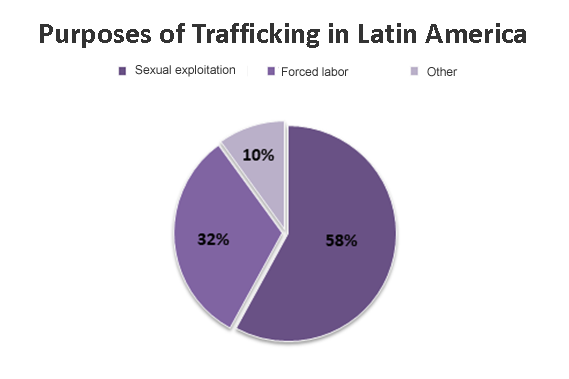World Day against Trafficking in Persons was created by resolution of the United Nations General Assembly on December 18, 2013 in order to raise awareness about the situation of victims of human trafficking. It is meant to promote and protect victims’ rights and recognize that this is an international problem with complex characteristics that requires the collaboration of political stakeholders from various countries. To this end, several agreements have been signed, including the Protocol to Prevent, Suppress and Punish Trafficking in Persons, which complements the United Nations Convention against Transnational Organized Crime.
According to Article 3 of the Protocol, trafficking is defined as “the recruitment, transportation, transfer, harbouring or receipt of persons, by means of the threat or use of force or other forms of coercion, of abduction, of fraud, of deception, of the abuse of power or of a position of vulnerability or of the giving or receiving of payments or benefits to achieve the consent of a person having control over another person, for the purpose of exploitation. Exploitation shall include, at a minimum, the exploitation of the prostitution of others or other forms of sexual exploitation, forced labour or services, slavery or practices similar to slavery, servitude or the removal of organs.” [1] This shows that the purpose of trafficking is multiple, diffuse and covers a wide range of practices.
The situation of Latin America:
In regard to the multiplicity and complexity of the phenomenon, the numbers show that of human trafficking victims in the region, 58% are sexually exploited (96% of them are women); 32% are forced to work (33% of them men, 26% women, 24% girls and 17% boys) and 10% are trafficked for other purposes, including begging and illegal adoption.[2] This means that women, children and adolescents, and impoverished individuals are most at risk for trafficking. For example, 170 individuals in Bolivia were trafficked for illegal adoption between 2014 and 2017.[3]

Although anyone can be a victim of trafficking, 2016 UN data show that 51% of trafficking victims in South America were women, 12% were men, 31% were girls and 6% were boys.[4] The data confirm that the most vulnerable groups in regard to trafficking are women and girls, which shows that the problem must be researched, addressed and resolved using a gender perspective.

While the UN reports that there are increasingly lower numbers of victims from the region found in Europe, the majority of the victims taken in Latin America are moved within the region, including Central America and the Caribbean. In its report, the UN reveals that most victims from the northern part of the continent, including countries like Colombia and Venezuela, were found in Central American and Caribbean countries such as Panama and the Dominican Republic. In order to address this problem, countries like Argentina, Bolivia, Brazil, Chile, Costa Rica, Colombia, the Dominican Republic, Ecuador, Guatemala, Mexico, Nicaragua, Panama, Peru, Uruguay and Venezuela[5]have introduced national legislation to address human trafficking. However, there is still a need for related public policies, information for local residents, and coordination with civil society and institutions that can help eliminate human trafficking networks and support victims. The complexity of this problem requires a multidisciplinary solution that involves the Executive Branch and the region’s justice systems as well as international coopera
[1] https://www.ohchr.org/en/professionalinterest/pages/protocoltraffickinginpersons.aspx.
[2] See https://cnnespanol.cnn.com/2019/07/30/5-datos-reveladores-sobre-la-trata-de-personas-en-sudamerica-explotacion-sexual-adopcion-ilegal-y-mas/.
[3] Ibid.
[4]See https://cnnespanol.cnn.com/2019/07/30/5-datos-reveladores-sobre-la-trata-de-personas-en-sudamerica-explotacion-sexual-adopcion-ilegal-y-mas/.
[5] See https://acnur.org/fileadmin/Documentos/Proteccion/Buenas_Practicas/9262.pdf.
